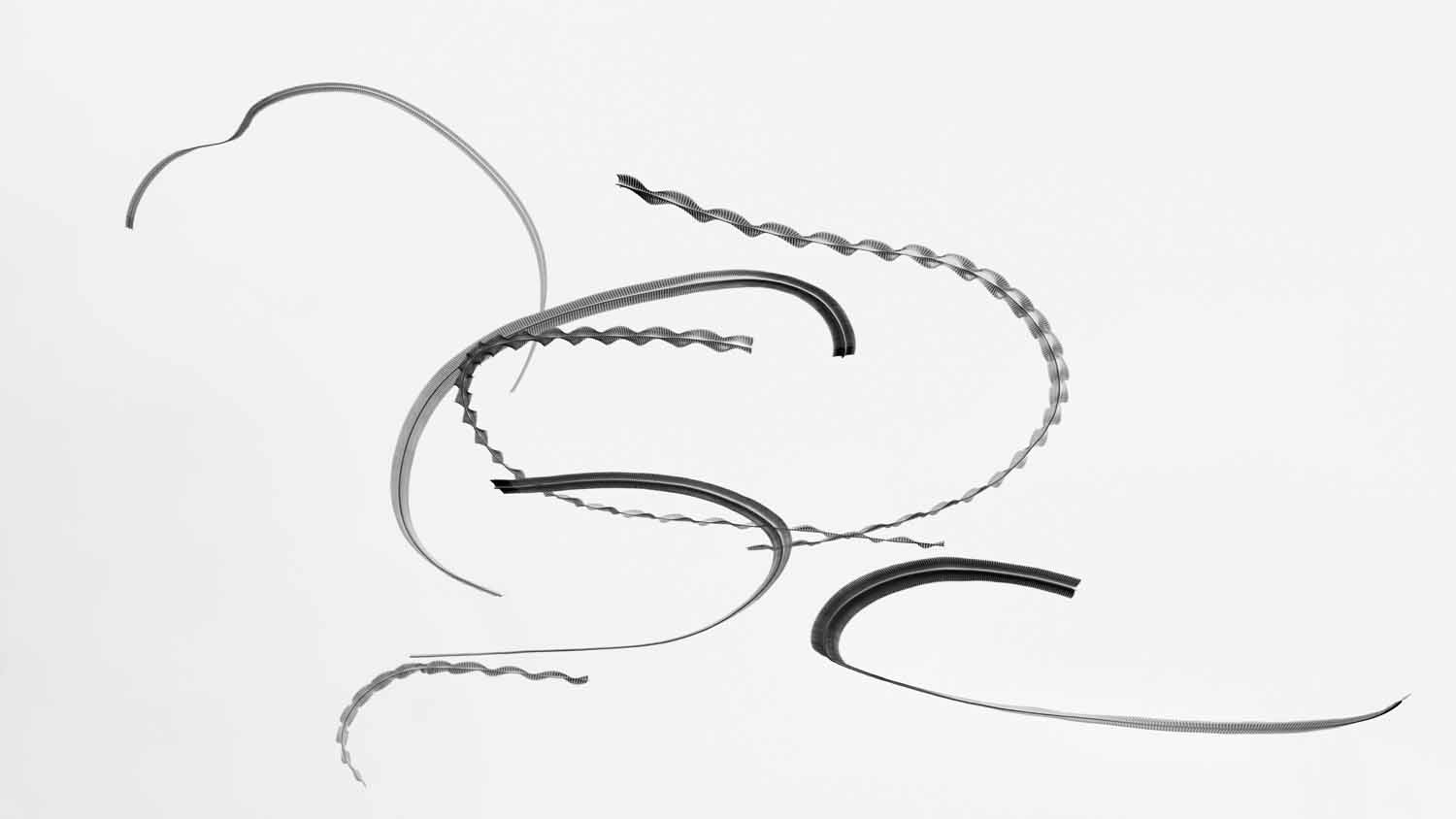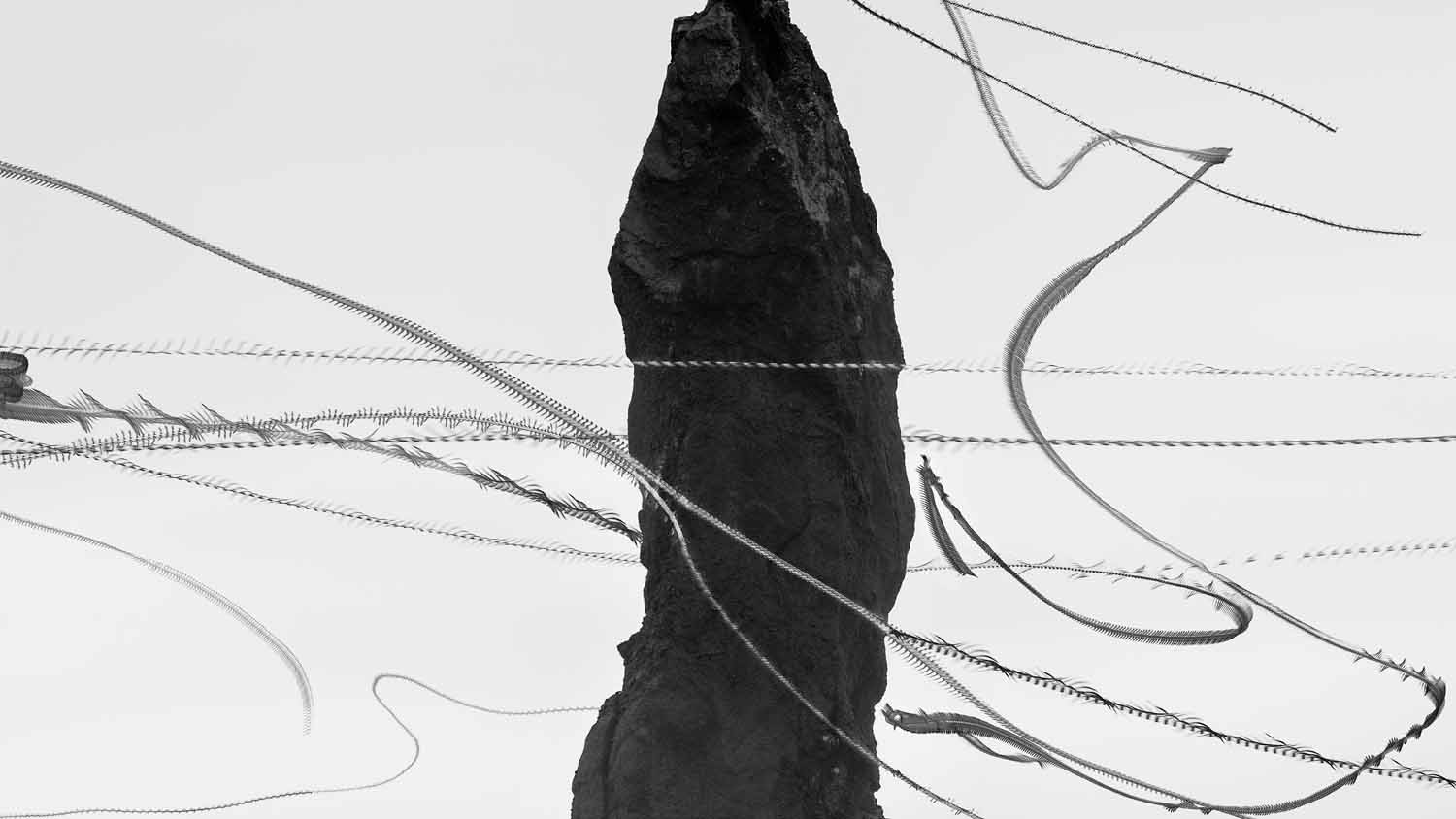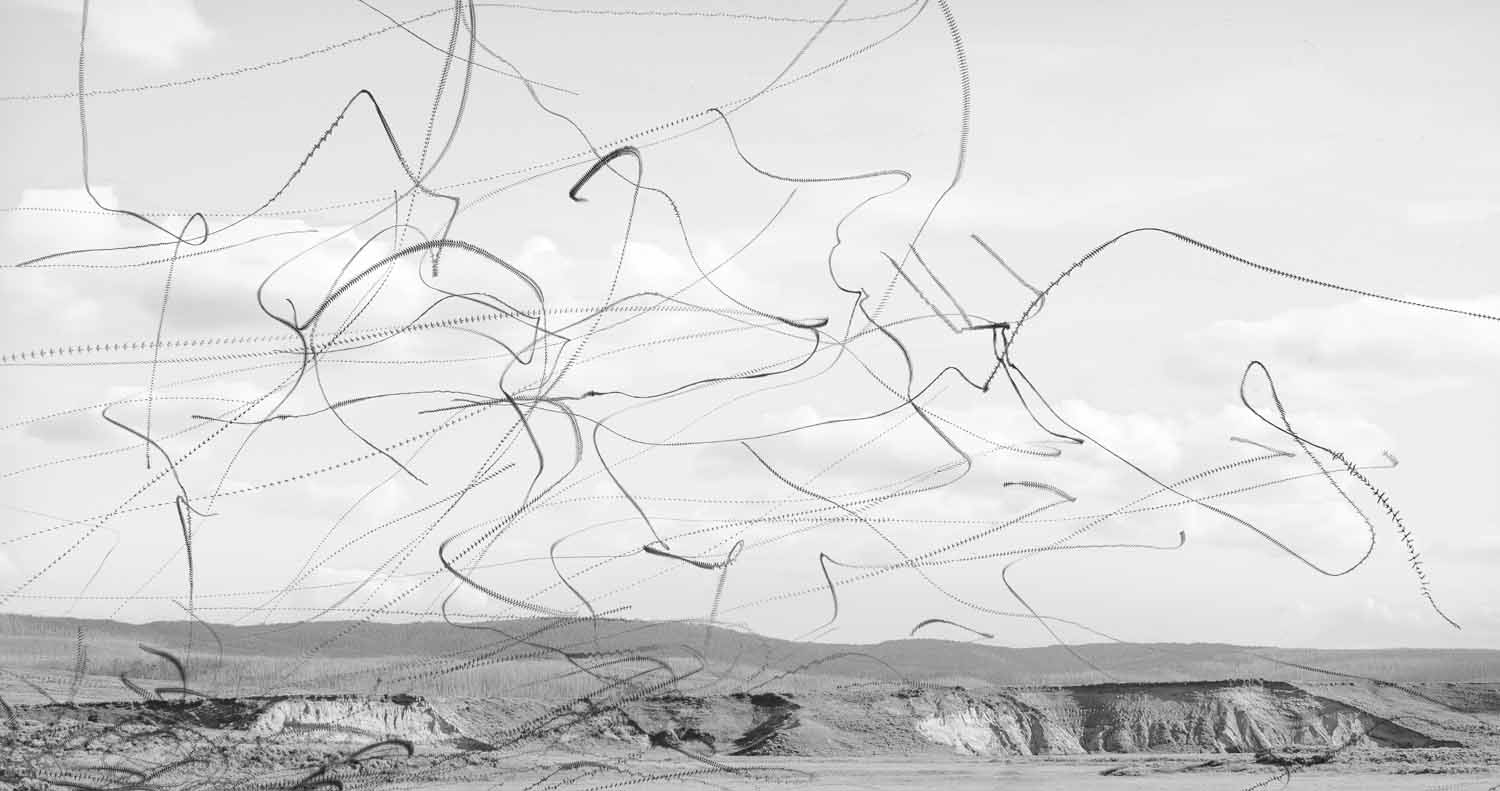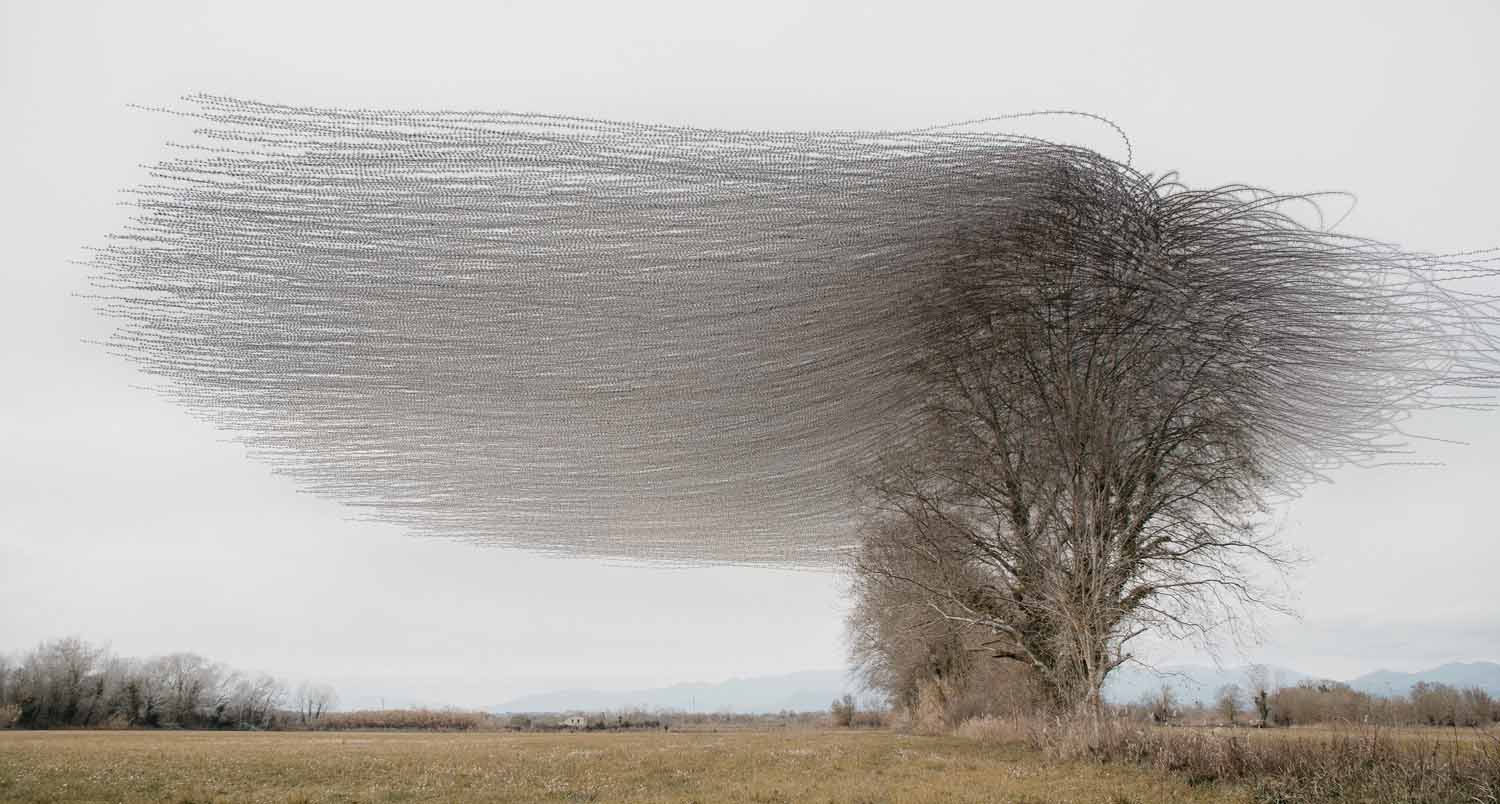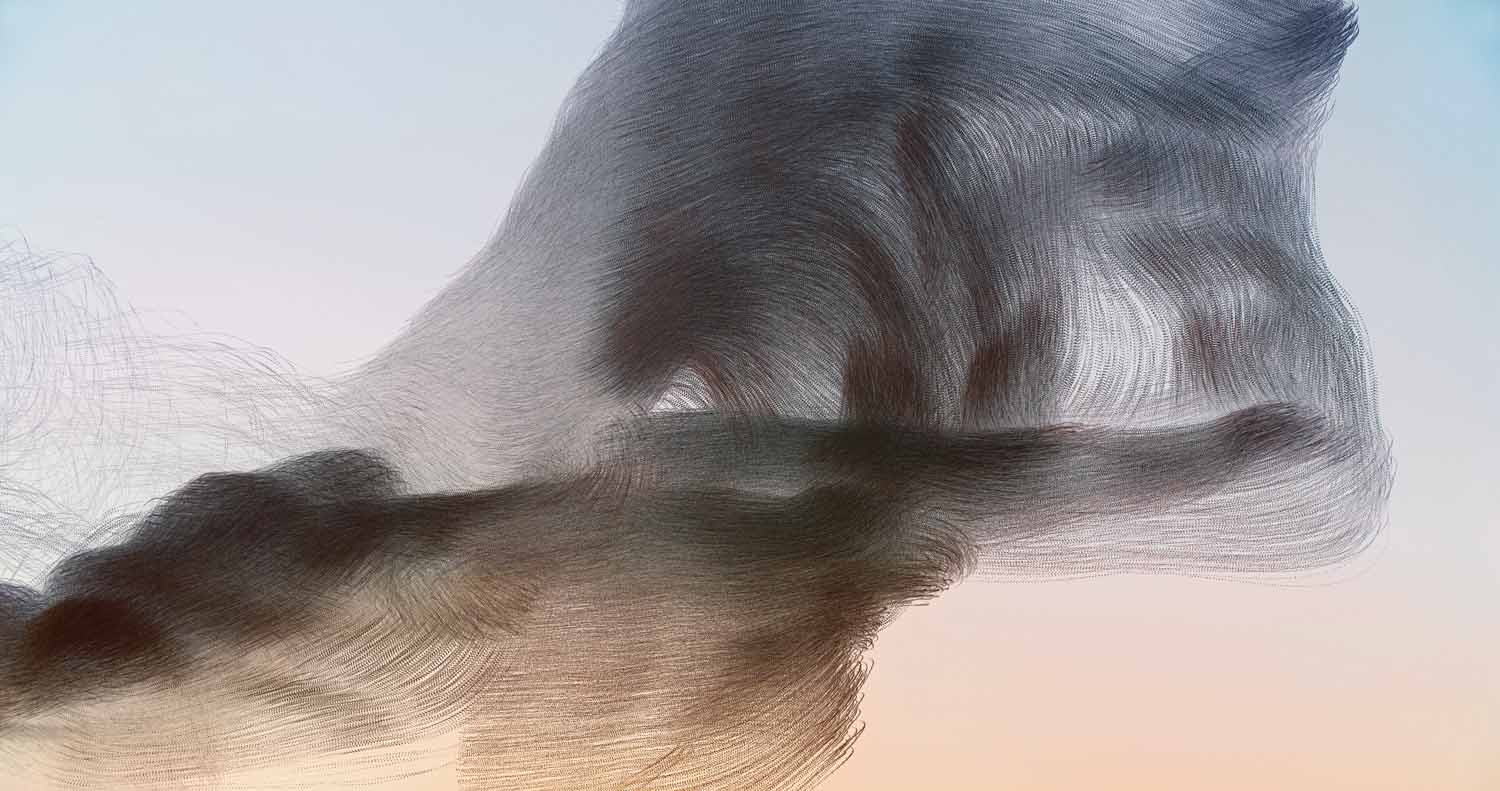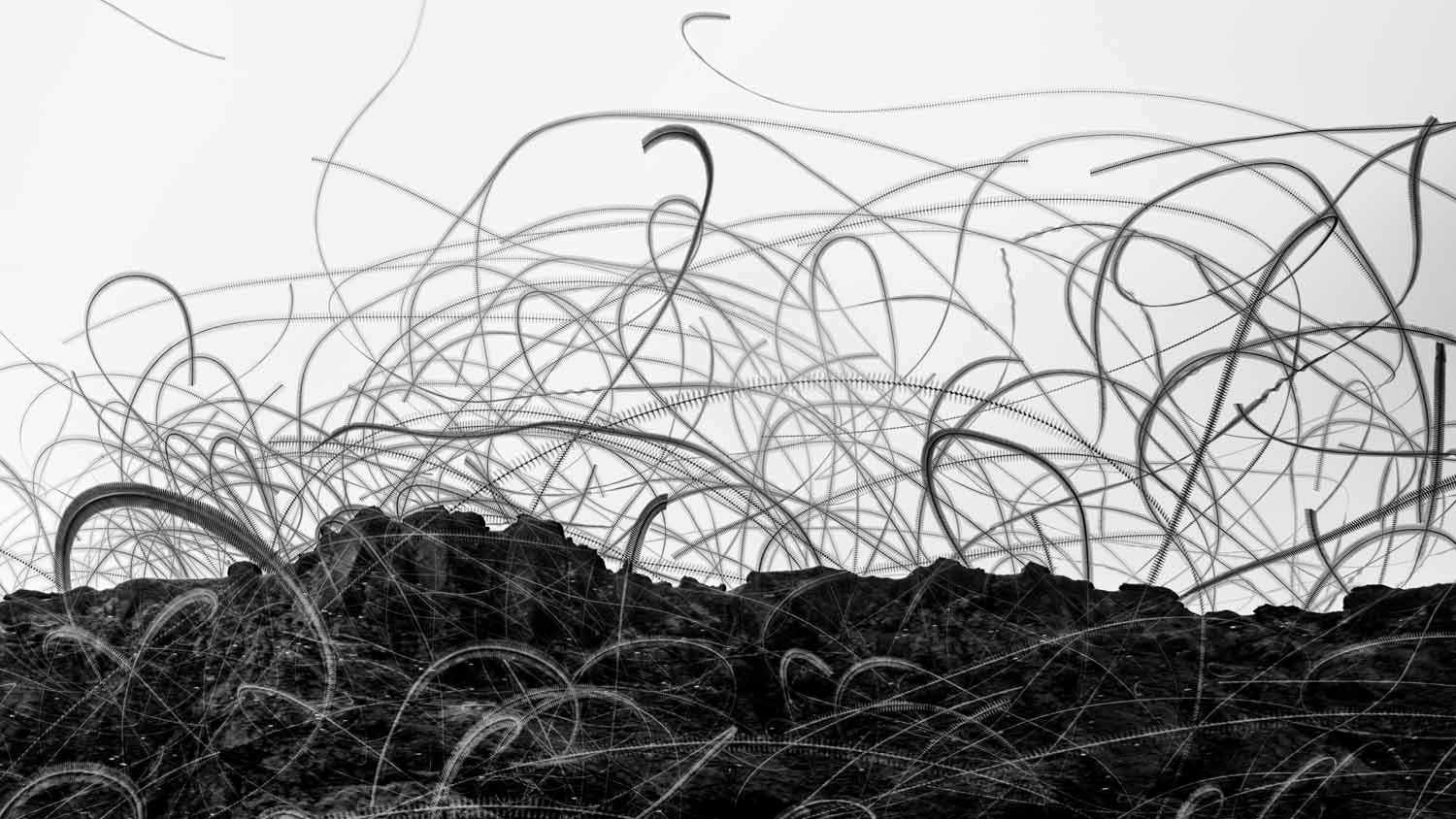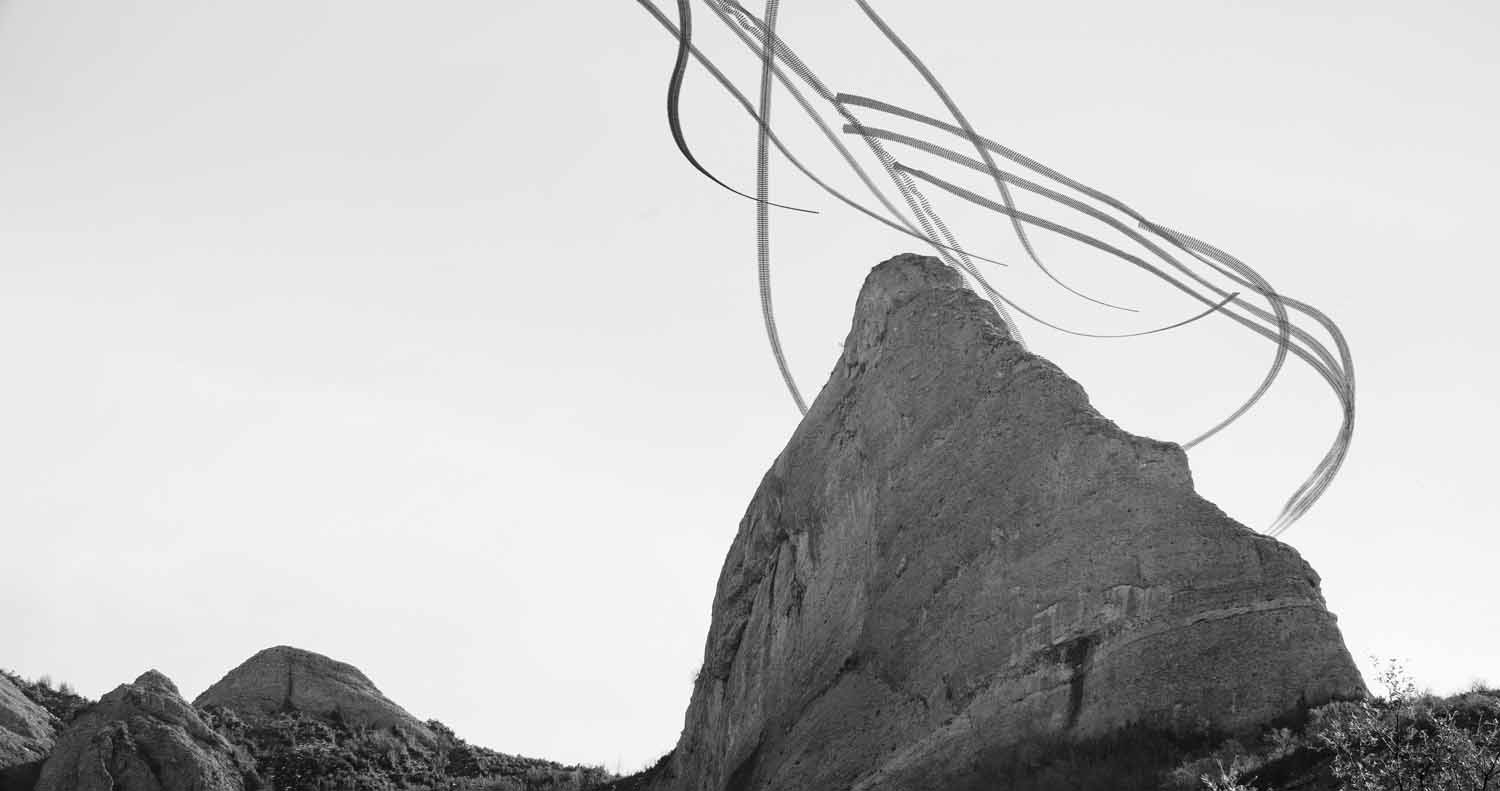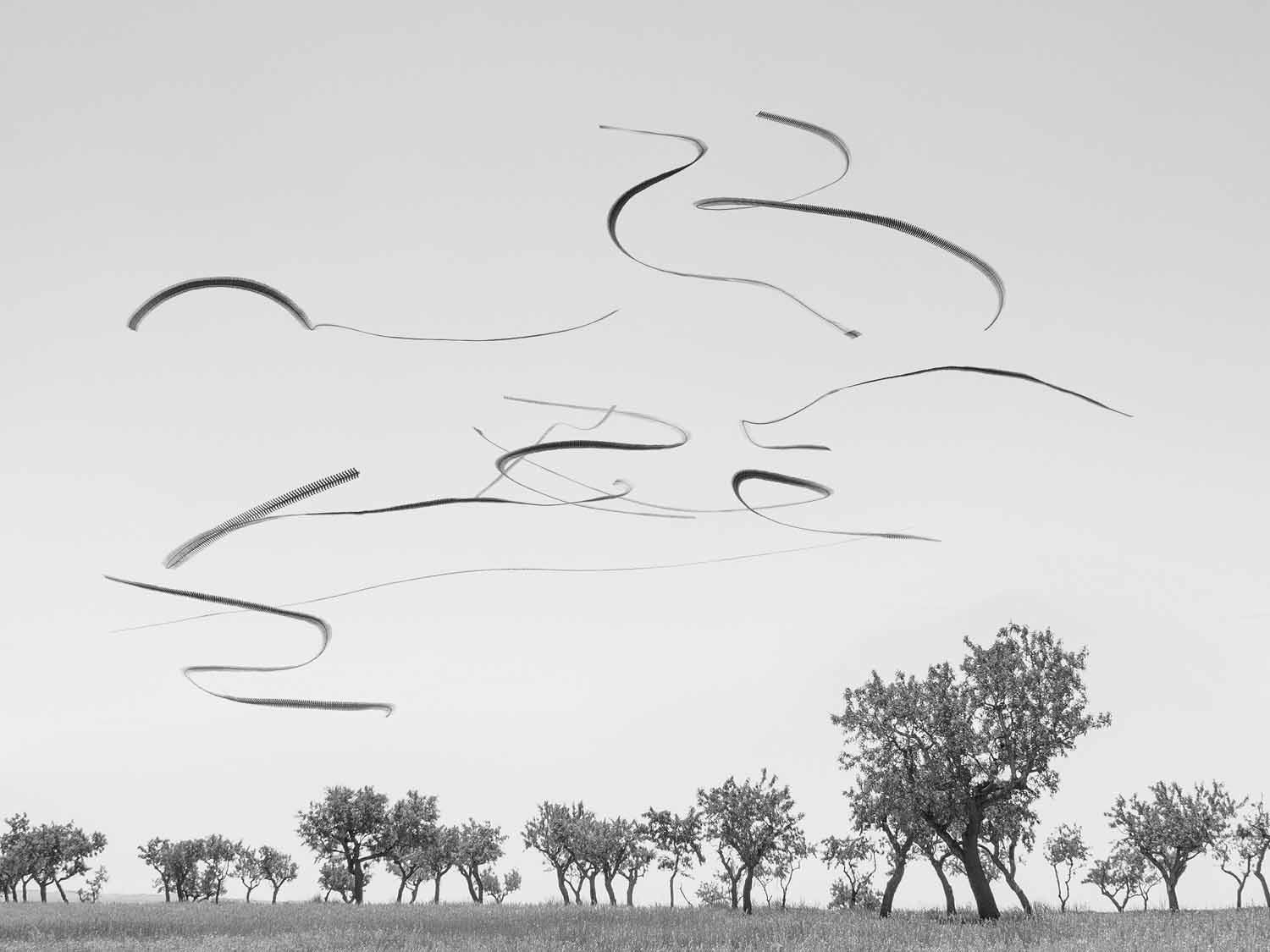In the 1940s, during the early years of radar, systems operators regularly reported inexplicable blooms and blurs of light moving across their screens. They called them angels. During the Second World War these illuminated echoes even prompted an invasion scare in Britain; only later, in peacetime, were they identified as ordinary things and everyday occurrences – birds flocking in flight.
Starlings, gulls, swallows, kites, fulmars . . . many grey-black angels are to be seen for real in Xavi Bou’s photographs. Each of his Ornithographies shows actual birds undertaking actual journeys, and all the images here reveal wing work – the specifics of flying and how every species flies in its own way. No scientific photography or technical illustration known to me has rendered bird locomotion as legible. No artistic treatment of the same has been so literally built from the real world.
Most of these images record roughly twenty seconds of flying time. Each flight is rendered as a line, thin or thick and curved or straight depending on how the bird flies. The line is a capture of a flight path and is made from a thread of snapshots of the moving bird harvested from hundreds or more frames and collaged into one. Wingbeats are first stopped, as it were, and then reanimated. Every final print contains within it a sequence. The now (Cartier-Bresson’s ‘decisive moment’) of each is stretched by Bou, so that each has a past – earlier moments of the bird’s flight – within its present. The effect is similar to looking at a zoetrope or a flicker-book except everything happens in a single image. A whole movie is condensed into one photograph.
No bird could ever be seen by our naked eye as Bou shows it, but every flying bird actually moves in that way. Paradoxically, his artfulness increases each picture’s truthfulness.
Three yellow-legged gulls and four white storks circle together up a column of rising air. Their flight paths make up the seven inky lines that alone mark this print. Even as calligraphy the birds’ jizz is apparent – jizz is the term for the combination of features and behaviour that constitutes the quintessence of every species and enables its identification. The bulky and broad-winged stork is a soaring bird that, if thermals permit, is not keen on wing flapping. These four are in luck: smooth brush-like strokes record their easy ride. Gulls soar too but are mostly flappers; that flight action is also recorded with their wings making more effortful undulating marks. We might even calculate energy spend: it takes on my count twenty-six flaps for a yellow-legged gull to rise as far as one soaring movement will lift a white stork.
Icarus would have pored over these photos and have learned from them; so might Amelia Earhart, or Leonardo, or the Birdman of Alcatraz, or David Lack, the radar operator turned ornithologist.
Tim Dee
All images © Xavi Bou


